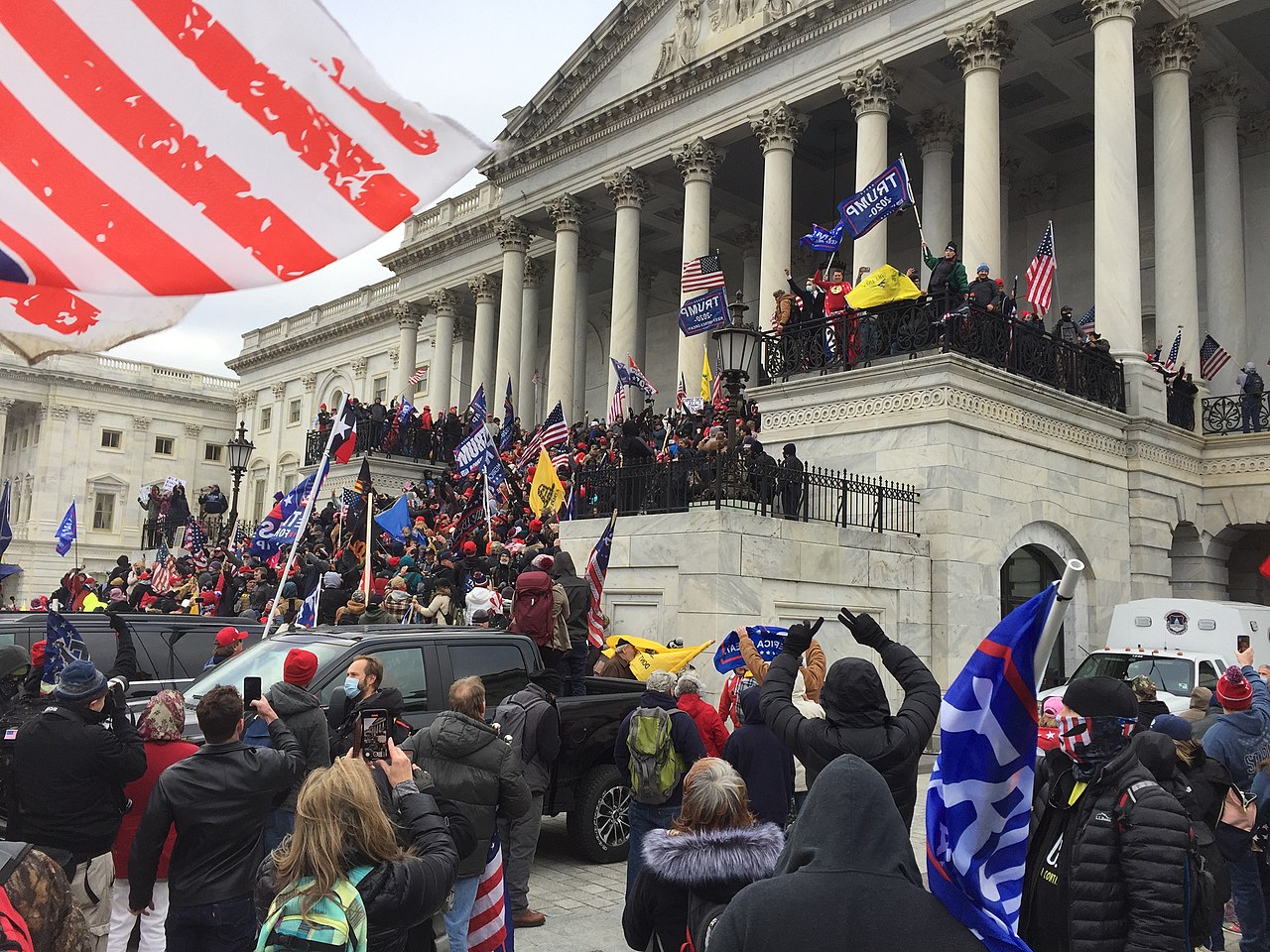One of the Capitol Riots insurrectionists was identified by an FBI agent he went to college with. Another was arrested to prevent a relative from getting the COVID vaccine.
This is how the FBI nabbed the Capitol Riots traitors in every way they knew how.
On February 13, Maryland state police officers encountered Daniel Egtvedt trying to prevent an elderly relative from leaving home to get a COVID-19 vaccine.
Another family member had called the police because they feared Egtvedt would perform “physical interventions” according to court records.
Egtvedt allegedly told officials at the time that he would not let his relatives go because of a marginal conspiracy theory that the vaccine “would eventually kill a lot of people as a government population control method.”
He was not immediately arrested, but when officials revealed his name, they made a discovery: Egtvedt was wanted in the U.S.
Capitol in connection with the January 6 Capitol Riots for attacking several police officers, obstructing Congress, and illegal entry. Later that day – and more than a month after the Capitol Riots – he was arrested by state police and is now in federal custody.
Capitol Riots: Jason Crow Blasts Security Officials, Saying ‘Anybody With A Facebook Account’ Could’ve Predicted Violence https://t.co/6nNzIUDizD pic.twitter.com/8mfl0ZwIUA
— CBSDenver (@CBSDenver) February 24, 2021
An activist group called DDoSecrets Collective released the data to Wired magazine over the weekend, claiming it offered “a record of the culture” related to the Capitol Riots on January 6th.
Some Capitol rioters have made it easier for the FBI to find them than others.
Court records describe chance encounters like the one that led to Egtvedt’s arrest and coincidences like an FBI agent who recognized a former classmate writing online about storming the Capitol. A huge network of people so far has helped the government build cases against their friends, family members, exes, co-workers, neighbors, customers, and even other Trump supporters. These cases also reveal a range of law enforcement activities – facial recognition software, license plate readers, cell phone tower data, search warrants for social media companies and messaging platforms like WhatsApp, and even old-fashioned stakeouts.
Egtvedt is one of more than 280 people arrested in connection with the riot to date, and there are hundreds more open files as investigators sift through tips, videos, social media posts, and other evidence. The Capitol Police estimate that more than 10,000 Trump supporters entered the Capitol grounds, of which about 800 entered the building.
Egtvedt didn’t take a selfie in the Capitol and posted it online like some early-arrested defendants did, but he reportedly spoke on camera to another defendant who was livestreaming and not hiding his face, which gave the FBI a clear photo to share to ask for tips. A witness recognized Egtvedt and contacted the office on January 20. The FBI then found public accounts under his name on Facebook, LinkedIn, Pinterest and Twitter and compared photos on those sites with surveillance footage, body-worn police cameras and other videos taken at the Capitol on Jan. 6. A criminal complaint was filed under Siegel on February 9 (prosecutors sealed these cases in most cases until arrested), and he was arrested four days later.
Prosecutors successfully argued that Egtvedt was being held in prison while his case was pending. In an arrest report they described him in part as a flight risk because his living situation was “unstable” – he had lived at different addresses since January. 6 – and when he was arrested, he was driving a different car than the one he brought to Washington.
Late last week the government unsealed the February 16 indictments filed against Luke Coffee, a Texas man accused of crutching against a line of police officers protecting the Capitol from rioters. On Jan. 22, another Washington-based FBI agent told investigators that they recognized Coffee in Facebook posts because the two were college classmates.
A member of the collective told Wired that the data was “a research goldmine for people looking at militias, neo-Nazis, the far-right party, QAnon and everything related to January 6th”.
C-SPAN just cut to a shot of Sen. Ted Cruz texting on his phone while former Capitol Police chief Steven Sund is testifying on the Capitol riots pic.twitter.com/Yyu2N4PVs2
— Grace Panetta (@grace_panetta) February 23, 2021
In another case, two suspected rioters were reported by a person who organized the bus trip they took from Pennsylvania to Washington for former President Donald Trump’s rally on Jan. 6. Several passengers had complained about them.
The tour operator, who is not named, was friends with someone referred to simply as a “retired law enforcement officer” and agreed to speak to that retired officer about the trip. The promoter eventually acted as the main witness on the indictment against Mark Aungst and Tammy Bronsburg in connection with the Capitol riots, saying that other passengers on the bus had come to him on the return journey with concerns about Aungst, including the fact that Aungst “was drunk and exchanged information” about going to the Capitol Riots.
The tour operator later conducted a follow-up interview with law enforcement officials and handed over a photo from the bus of Aungst thumbing up and photos that Aungst allegedly shared with another Capitol bus passenger.





